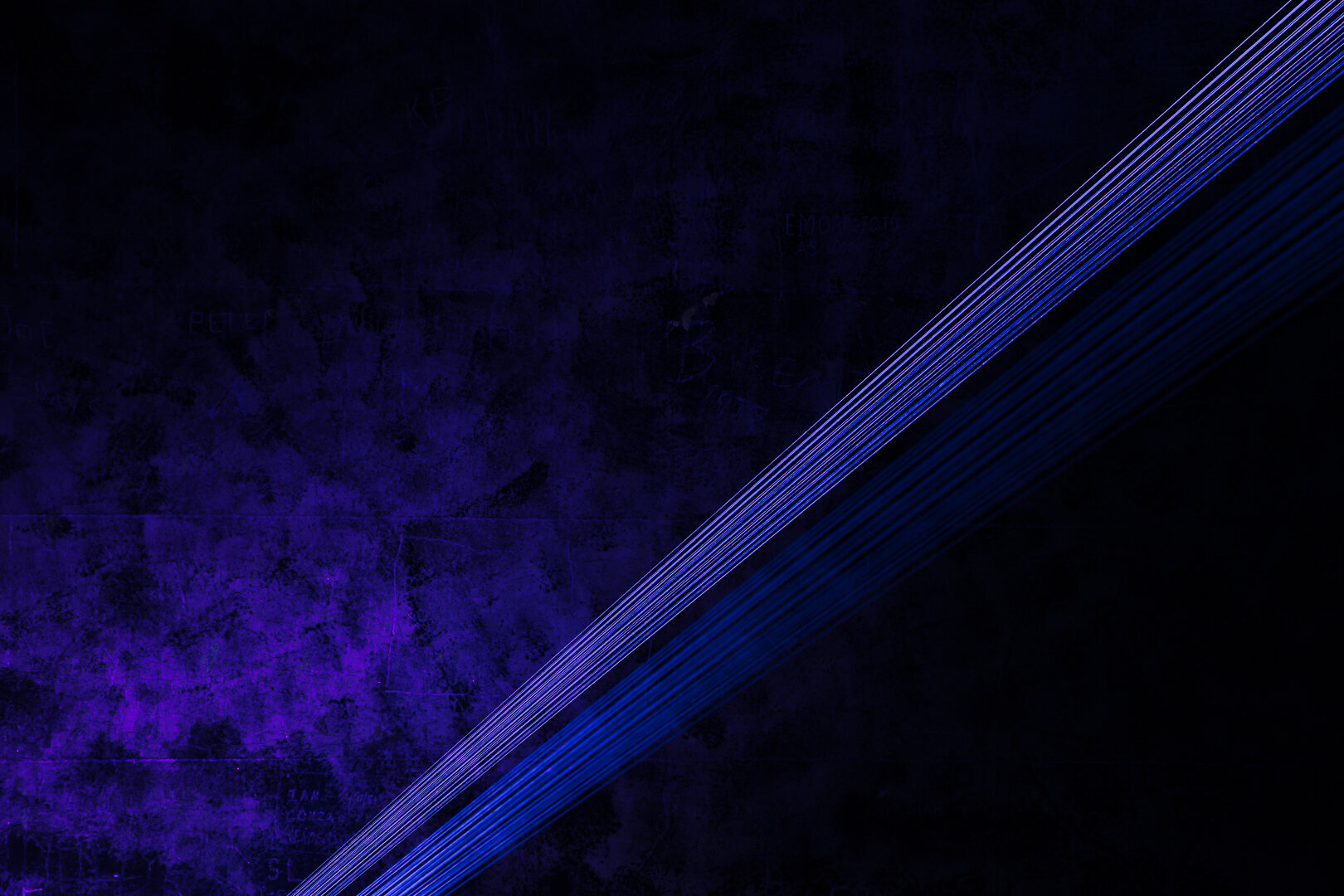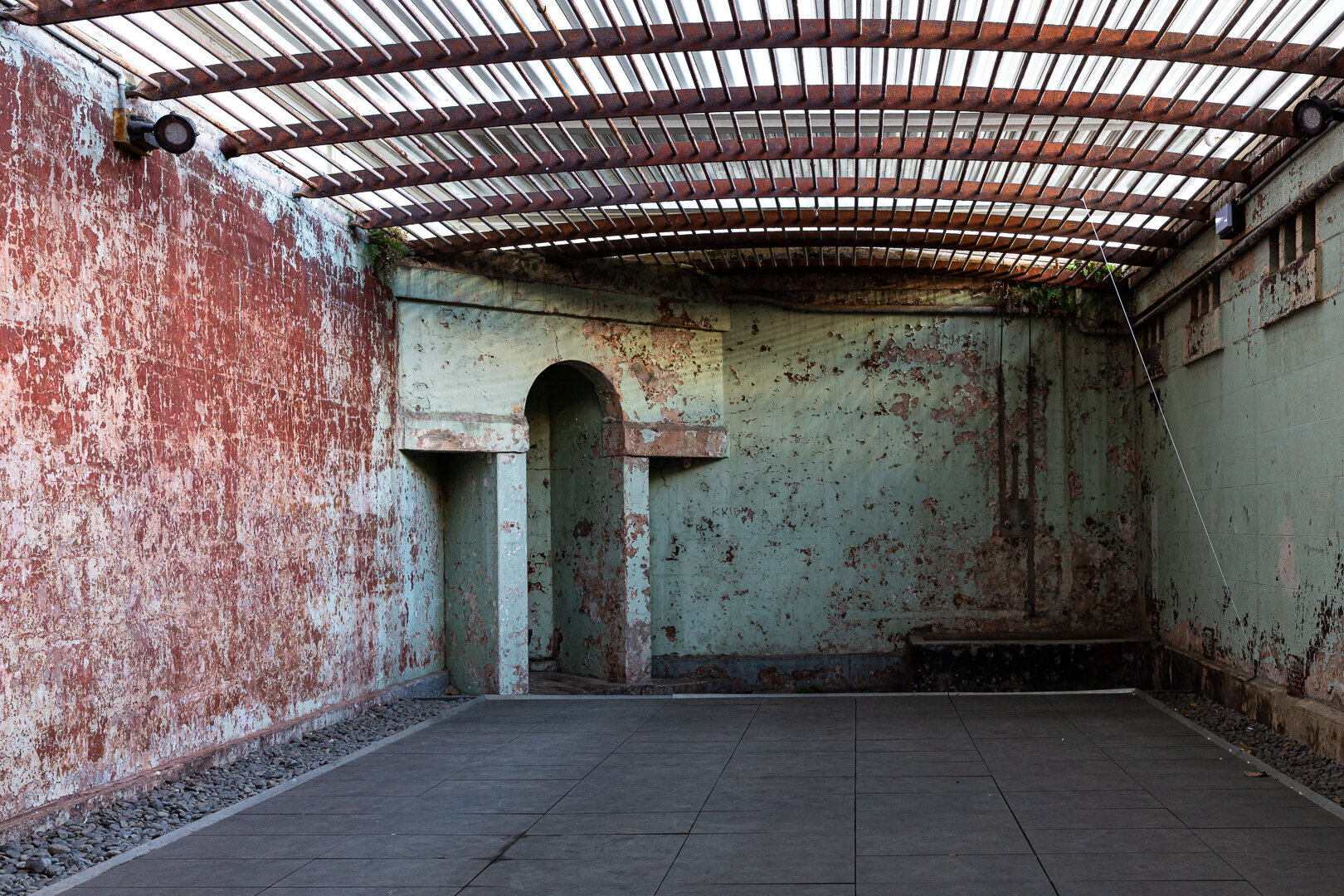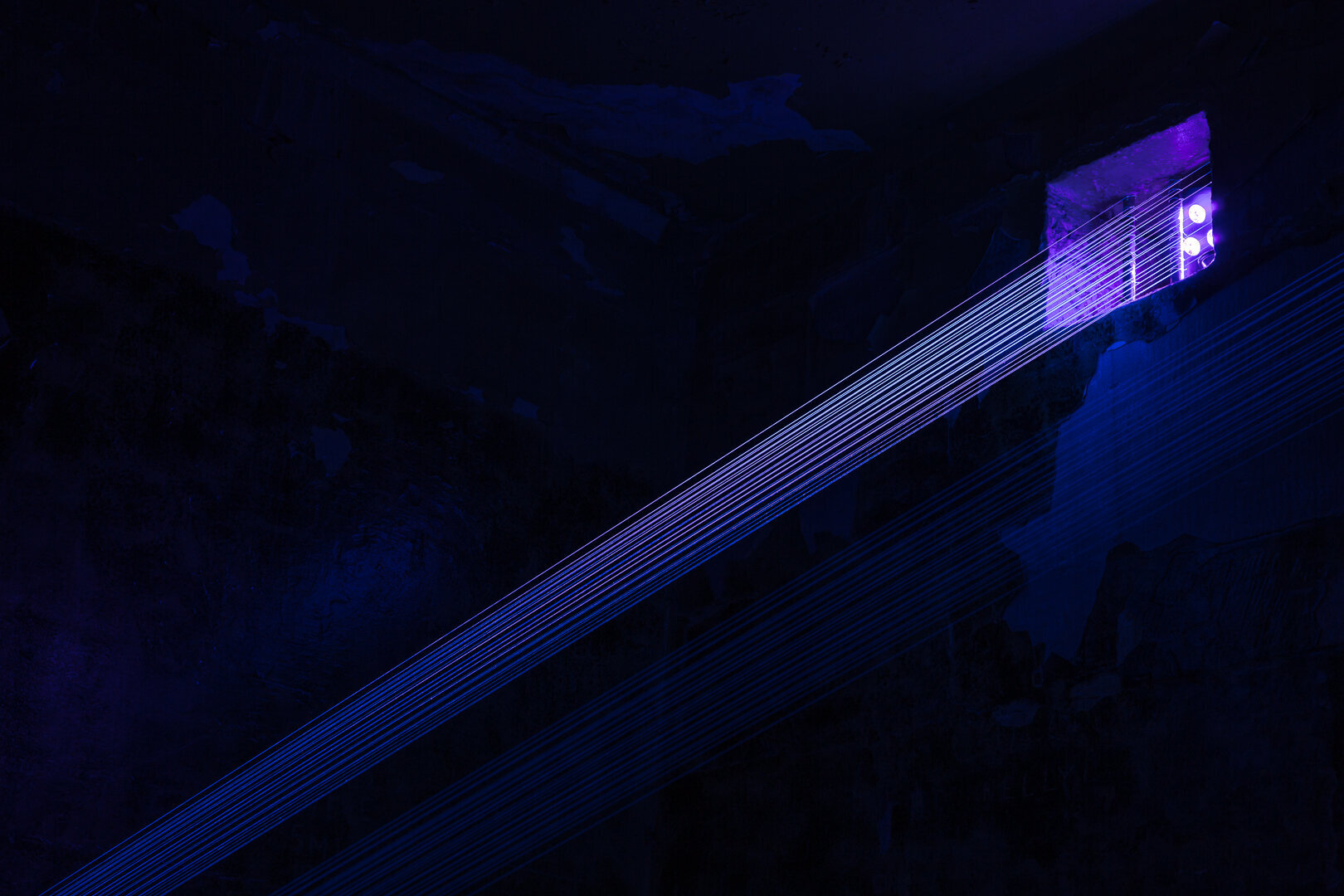EMMA FIELDEN: THE WHOLE AND PARTS OF INFINITY
by Julie Ewington
Writer, curator and broadcaster Julie Ewington speaks to Fielden's approach to the immeasurable in this essay,
written to accompany Fielden’s solo exhibition An Immeasurable Distance at The Lock-Up (2019).
1.
Emma Fielden has her head in the stars. Or rather, they are constantly in her thoughts. On one hand there is the grandeur of the universe, on the other the artist alone in her studio. That is the central conundrum of Fielden’s recent work: how to grasp that the world encompasses both the immeasurably large and infinitely small? And what about our place in the vastness of creation?
An Immeasurable Distance comprises installations, sculptures, performances and video works made between 2015 and 2019, which offer a sustained set of meditations on the nature of infinity. Let’s start with the furthest reaches of space, with the biggest picture. Distant Orbits (2016-19) in the Main Gallery is an immersive installation of thread, magnets, and projections suggesting the transit of blues across the heavens; it evokes the magnitude of the planetary systems, if one were able to see them from afar. Working with astronomer Dr. Andrew O’Brien of Western Sydney University, Fielden translated the pull of dark matter across time and space into threads that meet at magnets, which stands in for gravitational pulls. If Distant Orbits is on one level a practical walk-in model of the skies, it’s also a site of speculative wonder: we are immediately situated at the conjunction of the grand and the minuscule that reveals we are an integral part of something huge but are always, simultaneously, unimportant.
Around Distant Orbits is a constellation of works addressing different corners of this imagined universe, and particular aspects of the ideas that strive to capture its glorious enormity, drawn from physics, mathematics, philosophy, and from poetry and the other arts - Carol Jenkins’s 2007 poem, When Years Take the Stars Away, is a case in point. Some works sit in oppositional relationships: in A Moment in Darkness (2019), in Cell A, magnetized black pigment covers the entire floor, its heavy light-absorbing surface disturbed only by the powerful pull of the magnets sitting at its centre; in From Nought (2019) in Cell D, on the other hand, fine white threads rise up to the window, finding ultraviolet light in the darkness that then runs down their length to the corner of the room. Despite their differences, both works are conceptually close to From Void (2019) in Cell E, where a white marble square covered with black ink is kissed by hanging threads, which then draw the ink up their length towards the ceiling and, eventually, to the sky; and that in turn owes to the earlier ink drawings Gravity and Lightness (2018), in the Small Front Gallery. With all these works Fielden explores how to make actual, and visible, the physical phenomena we know from that beautiful place where speculation meets the cosmos. Which are often theorised into existence before there ways to see them.
2.
Now let us observe how Emma Fielden works through materials that are either black, or white, or both, and think about the dialogues between blackness and whiteness. Black and white are also…
Dark and light
Night and day
Lightlessness and sunlight (pure light)
The absence of colour, and all colours mixed
Closing one’s eyes, then opening them
Ink on paper
Impenetrability and opacity
Negative and positive
One and two people
Noted in Pythagoras’s Table of Opposites
The assertion and denial of certainty
…and more besides.
In Fielden’s work, black and white are integral to a series of dialogical exchanges. Each piece exists in conversation with its antecedents and the actions and works subsequent to it. Thus we may observe the structuring principles subtending the blackness of the ink, the various pigments, and the ferrous magnets, and the whiteness of marble and light, and above all, we note the purity and intensity of each element. Generally, Fielden mobilises oppositions between materials: with Coalescence (2019), in Cell B, for example, dropping ink gradually fuses with the water, joining and overcoming its limpidity, but occasionally black meets black: in A Moment in Darkness both key elements, pigment and magnets, are black. Similarities between these exchanges are sometimes signalled by the titles – for example with From Nought and From Void. Above all, though, these dialogical relations are secured by the lexicon of materials with which Fielden works: magnets (and magnetised pigments), thread, light, ink, paper, water, actions (often recorded on video), and now marble. It’s a contained set of tools, actions and options for drawing out the mysteries of the cosmos.
3.
Infinity encompasses the extremes of creation. It describes both that which is so extensive as to be immeasurable, and so small as not only to be invisible but capable, at a hypothetical level, of never-ending divisibility. Fielden loves the improbable beauty of speculations in physics and mathematics, their conceptual power, and their role in offering possible answers to the core mysteries of the physical world. Yet her (day) job is not to solve the theoretical problems posed by infinity, nor even to grasp all the complexities of propositions that attempt to account for it. As an artist, her project is as paradoxical as infinity itself: she makes visible meditations on large questions about the universe, places big ideas within the confined spaces of a building, and sets meaningful actions within an extended project.
How to contain infinity, though? It cannot be confined, yet mathematicians, physicists, philosophers, theologians, and, yes, artists beyond number have devoted themselves to considering its implications. To take a contemporary example, how to comprehend the beautiful (and sometimes baffling) duality between zero and infinity? Emma Fielden’s An Immeasurable Distance takes infinity as its starting-point, and that is also, as a necessary corollary, its terminus. A case in point: in Infinity (1 metre) (2019), in Cell F, we see Fielden carefully cutting up a metre of black thread, reducing it gradually to very small pieces of the original length. Taken together these pieces are the sum of the original metre of thread, which will never be whole again. Moreover, while Fielden started with a finite length of thread, how are we to know that each minute segment is the smallest possible unit that can be achieved? Fielden’s method here invokes the Infinity Paradox of the great German mathematician Georg Cantor (1845-1918), the inventor of Set Theory who established that infinity, remarkably, comes in different sizes. Cantor’s is not the only paradox here. With her physical propositions Fielden demonstrates that distance and proximity may be experienced simultaneously; in Axis Mundi: The Line and The Matter (2015), the delicately poised column of magnets ascends from floor to ceiling (or perhaps descends from ceiling to floor), but what the mirror shows seems very like infinity.
Emma Fielden scopes the universe through the thinking about it. (She combs the history and philosophy of science, draws on recent developments in physics and astronomy, delights in mathematical conundra.) Eventually, though, this conceptual investigation comes back to humans in search of a place in creation. This is how I think of the video We are two molecules floating together in space and our distance is infinite… then the sound of birds (2018), in the Large Front Gallery. The two women, Fielden and fellow artist Hanae Utamura, are separate individuals, but like a chorus of birds, their lived unpredictability will introduce unexpected results: listen for the little clatter of stones at the end. So while the beauty Fielden craves is found in phenomena like the deferred drama of two black holes on a collision course, these have personal implications, which she sees in works by other artists: in Magritte’s The Lovers (1928), shrouded heads seek to kiss in the fog of existence, or in Louise Bourgeois’s wonderful 1965 drawing found at MoMA in New York, its two ovals forever nearly touching, but not quite. As Emma Fielden suggests, from the remote to the infinitesimally close, infinity lives within us all.
Julie Ewington, 2019
AN IMMEASURABLE DISTANCE: EMMA FIELDEN is assisted by the Australian Government through the Australia Council, its arts funding and advisory body
and by the NSW Government through Create NSW. Words courtesy Julie Ewington and The Lock-Up, Newcastle.





















